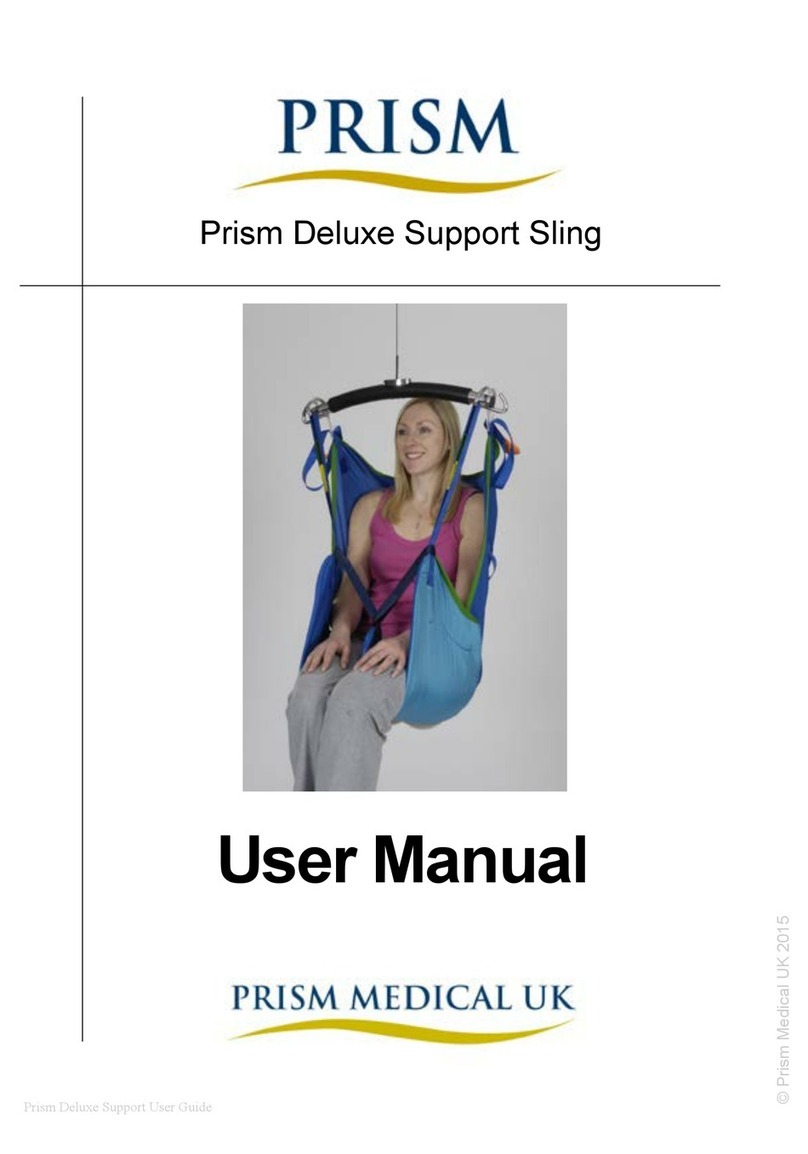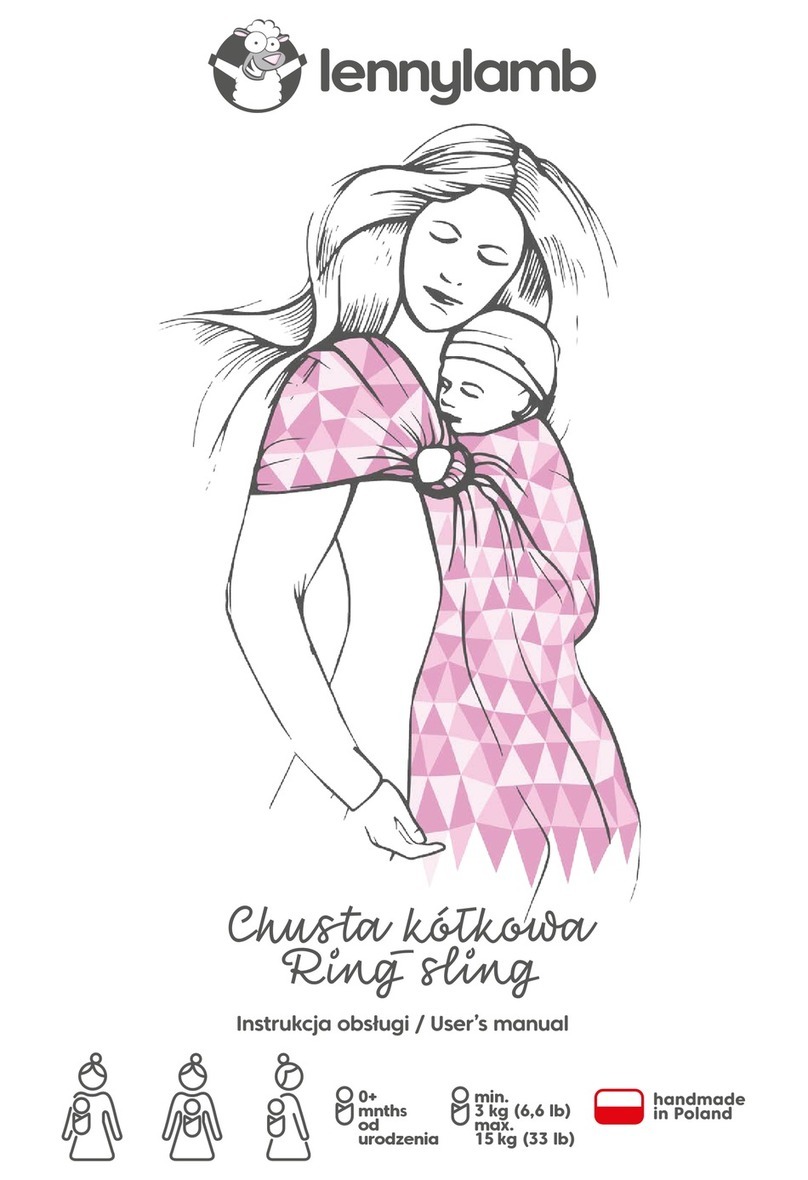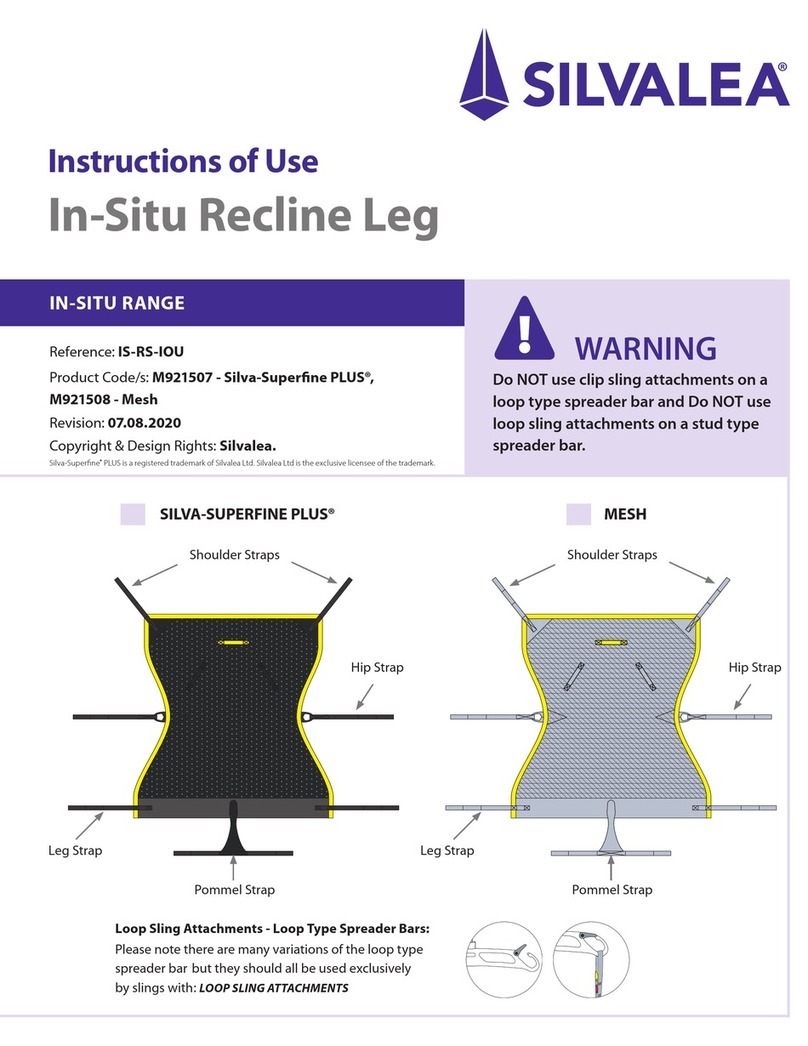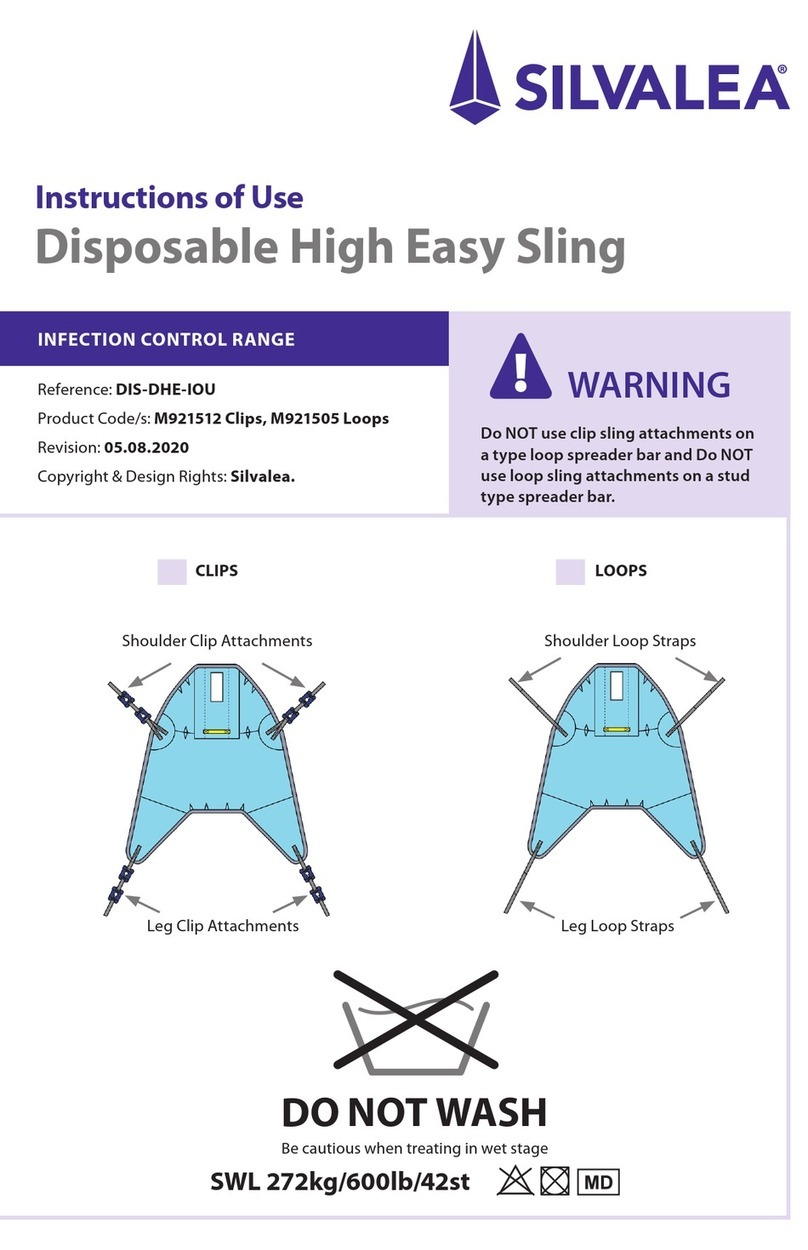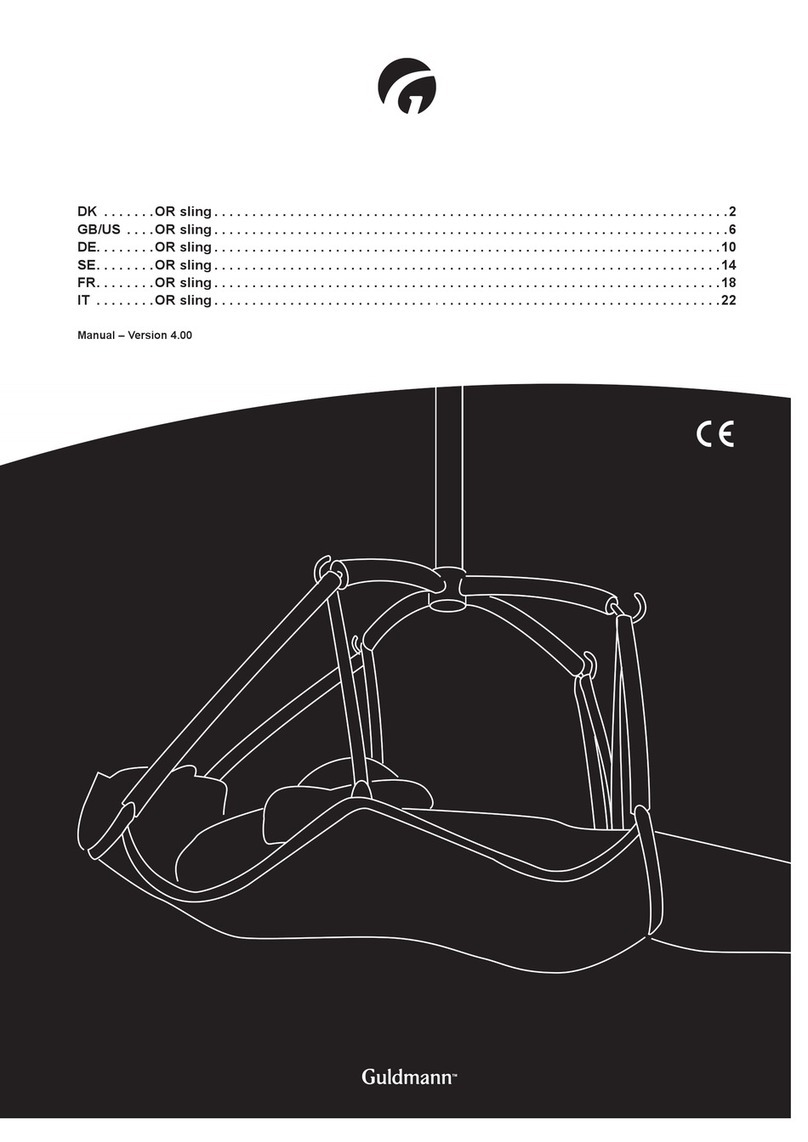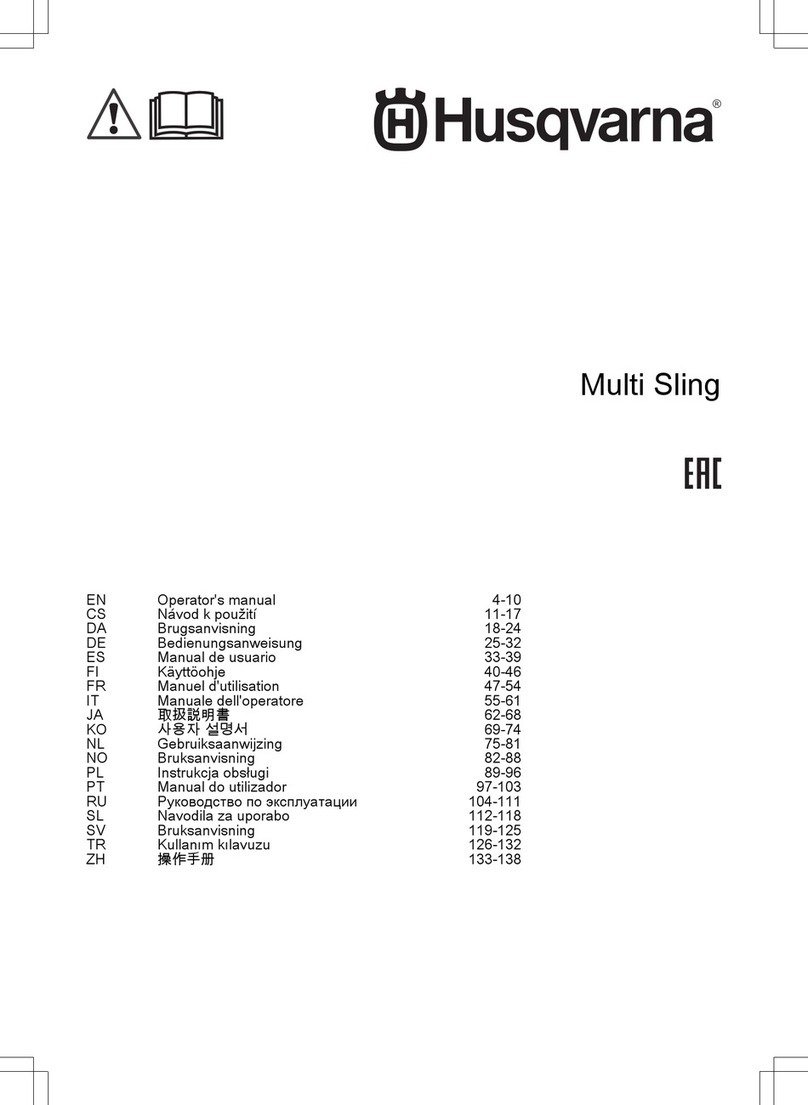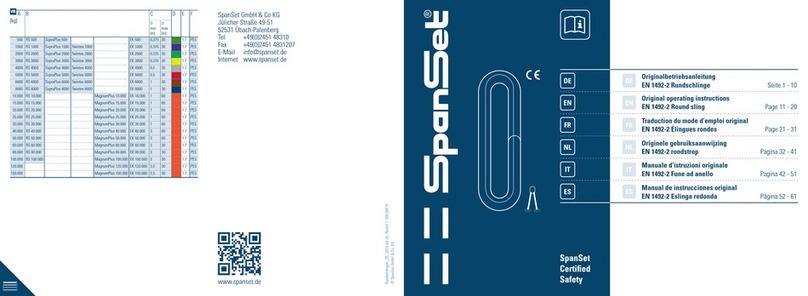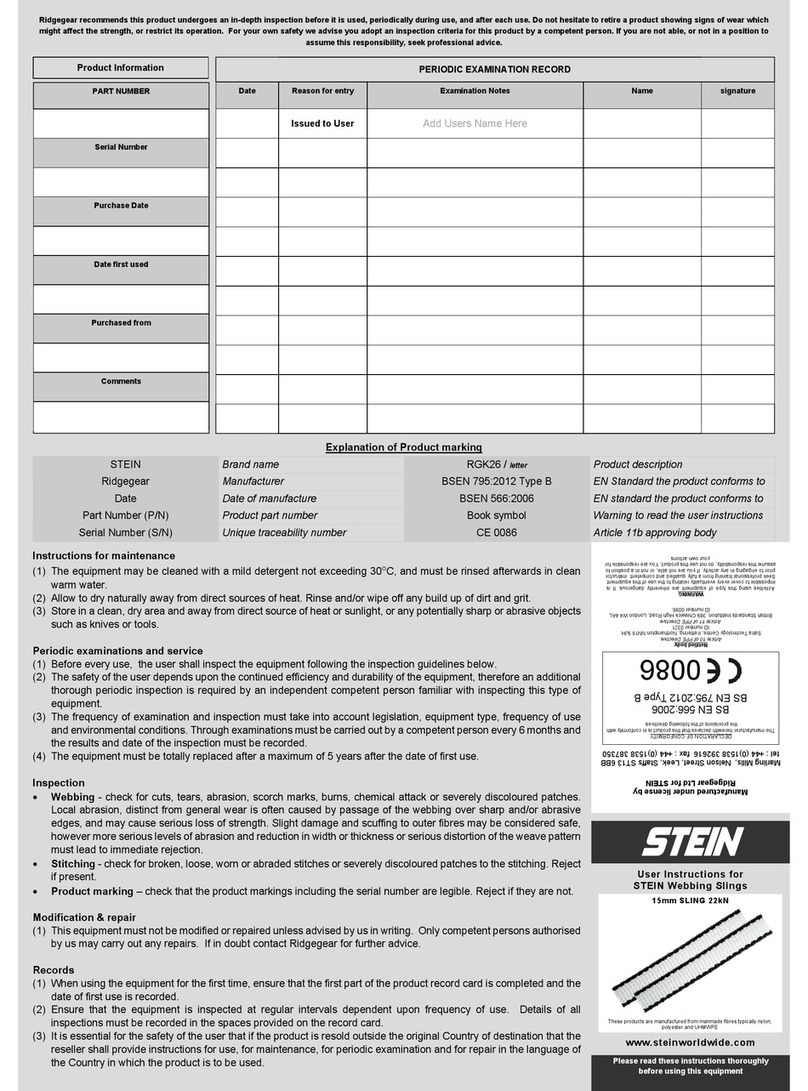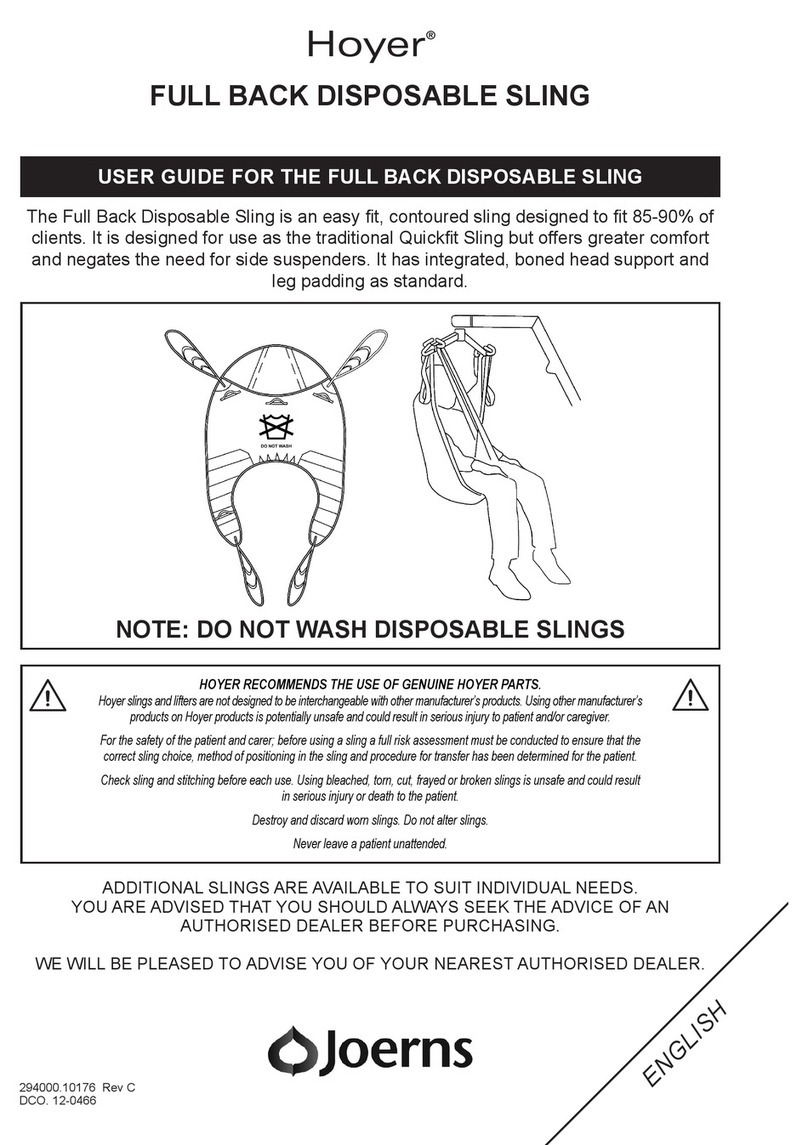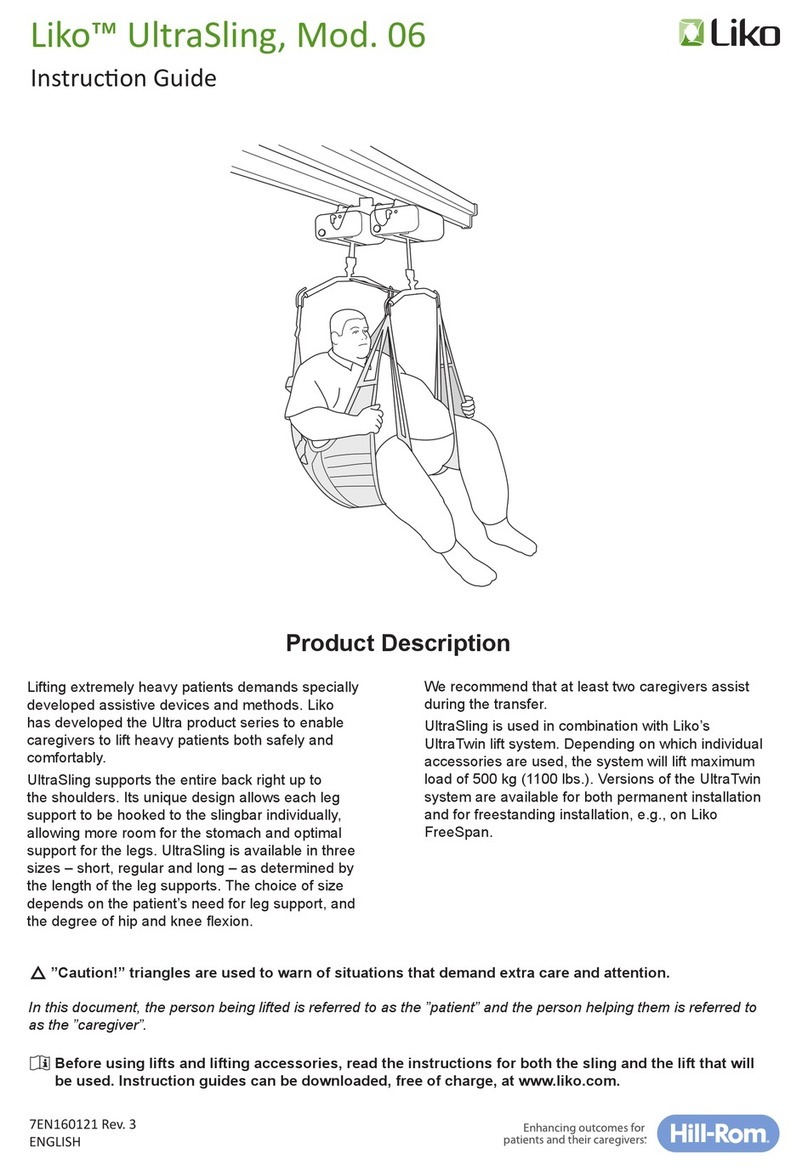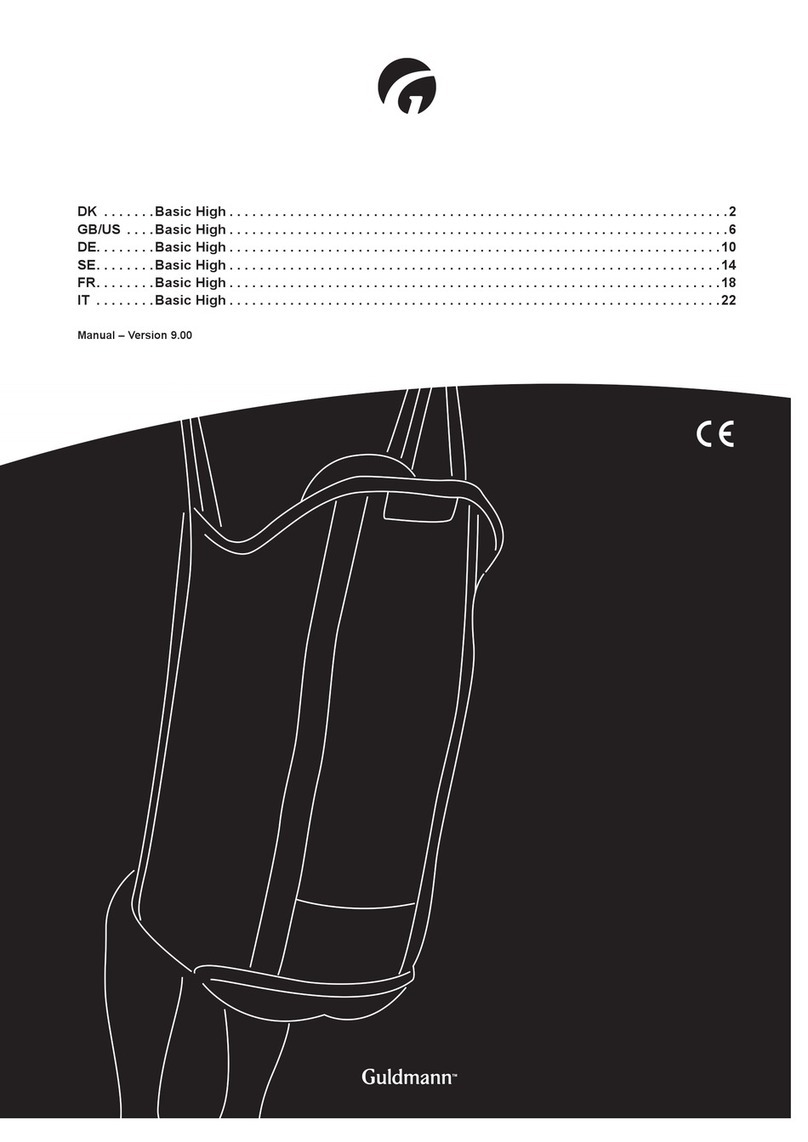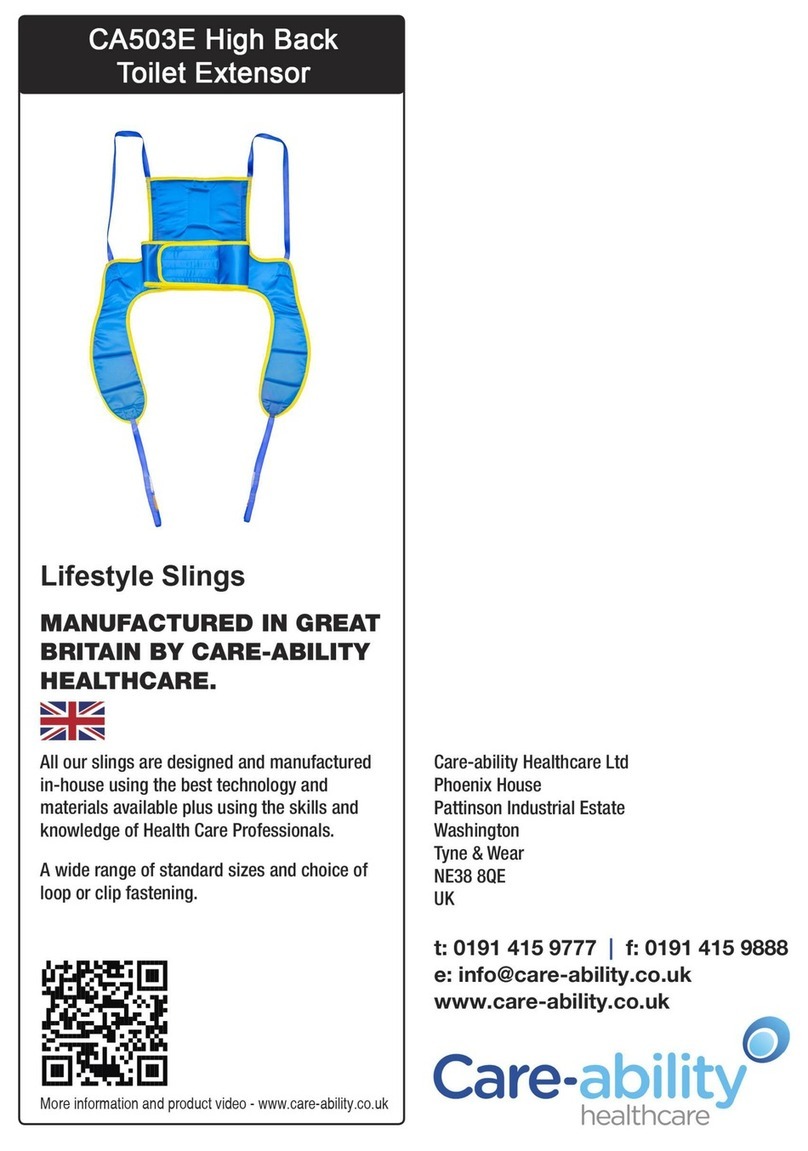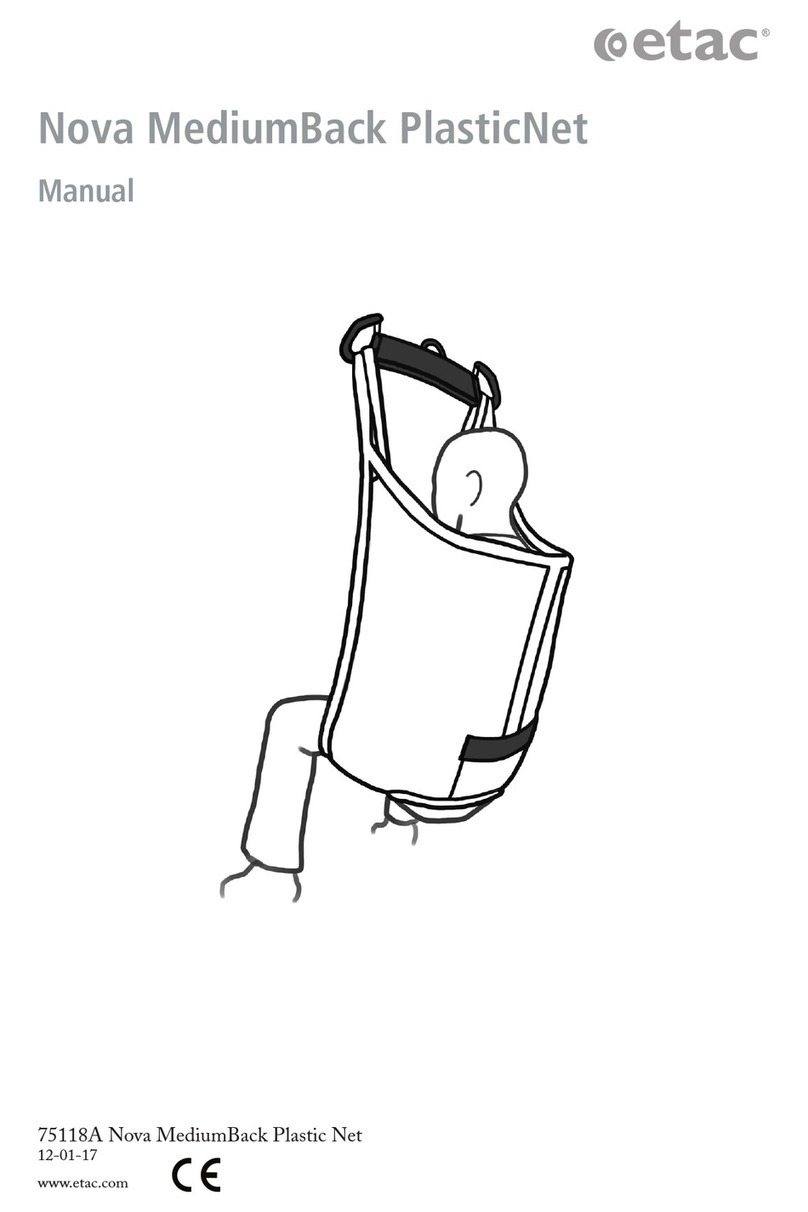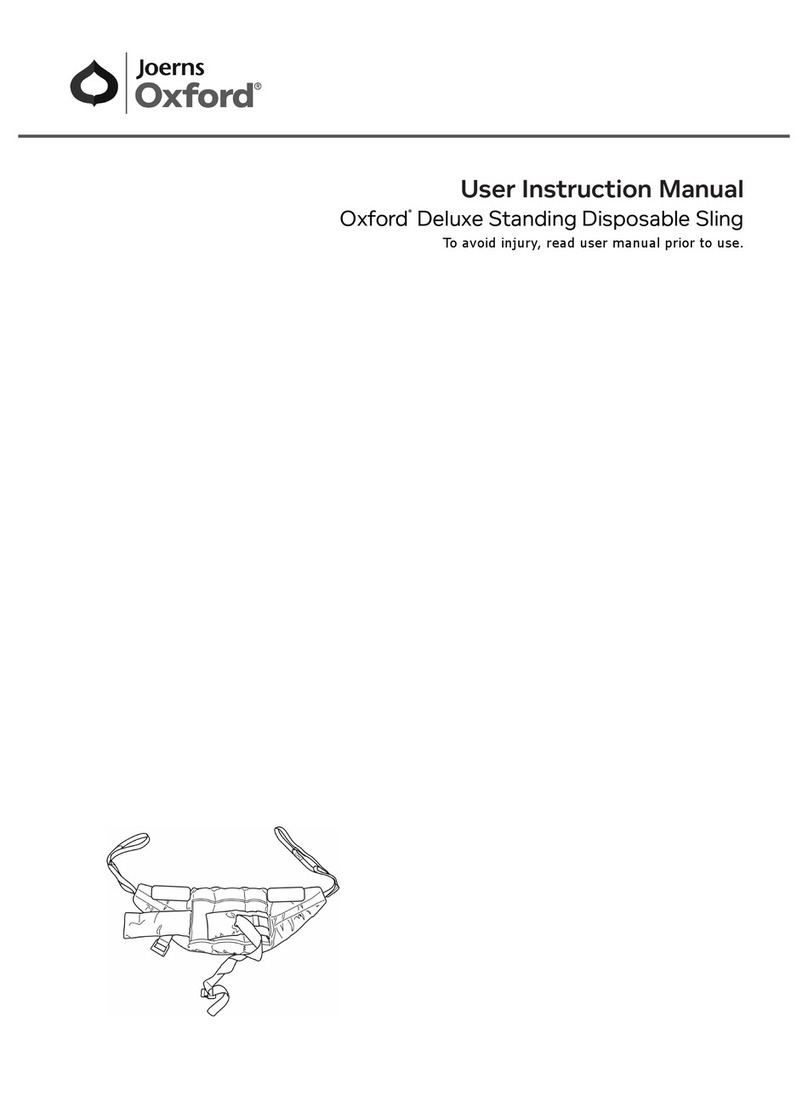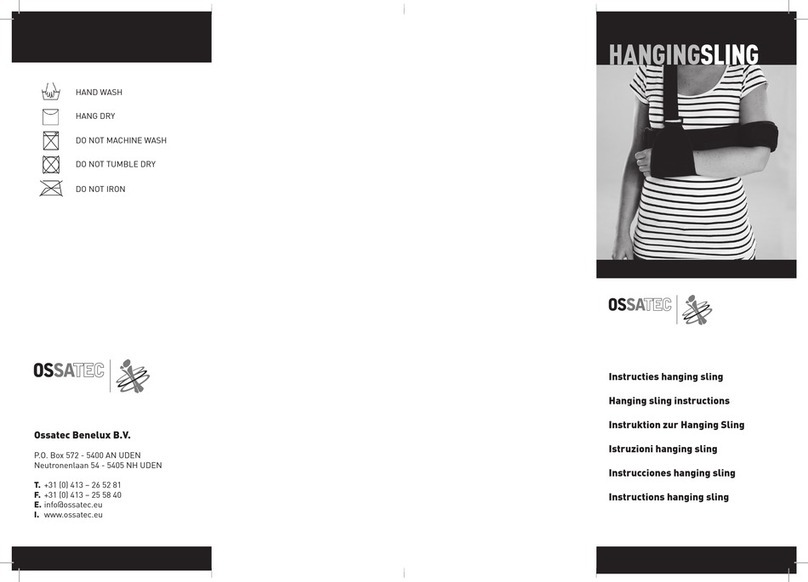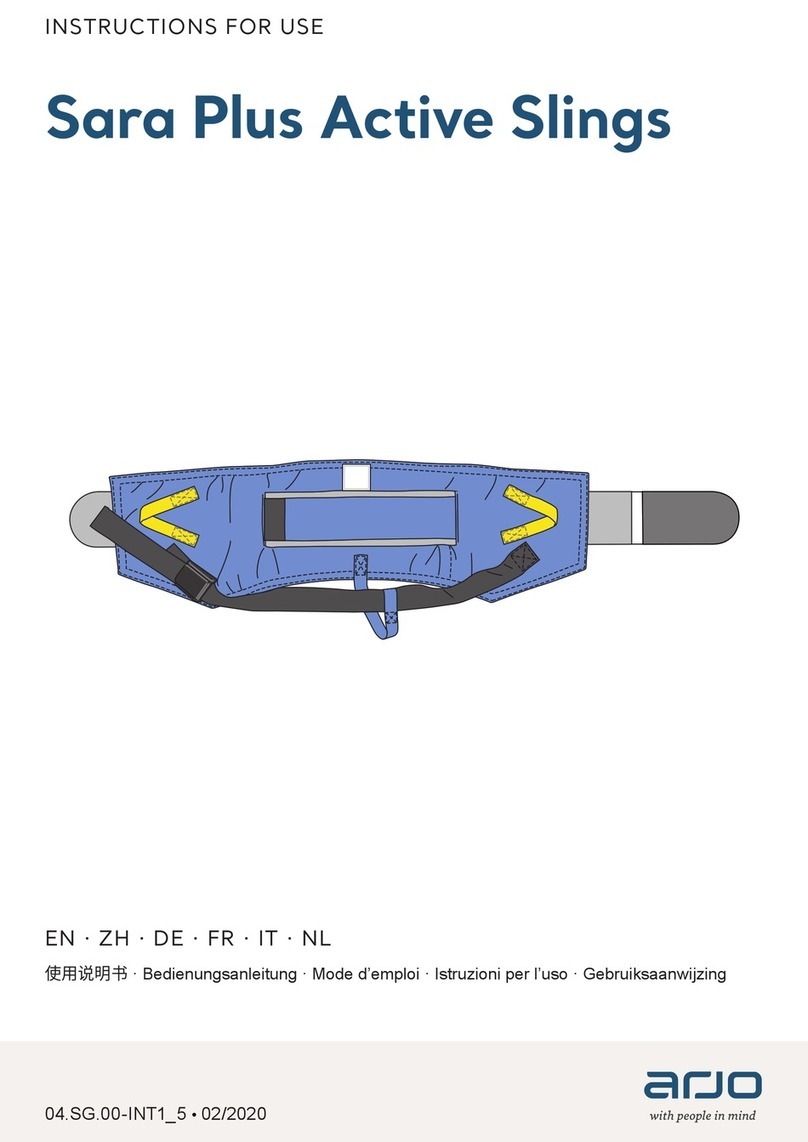Prism Medical UK Universal Child User manual

© Prism Medical UK 2010
PL1 - Prism Universal User Guide - Doc 001 - Rev 10/2010
User Manual
Prism Universal Sling Range

© Prism Medical UK 2010
PL1 - Prism Universal User Guide - Doc 001 - Rev 10/2010
Prism Universal Sling
Application
The Universal sling is designed for ease of fitting and general purpose transfer It
can be used to transfer from the seated to recumbent position or from recumbent to
seated The person must be assessed by a competent person who must be fully
trained in the suitability, application and fitting of the sling Carers should always be
trained in the use of hoists and slings
Sling Inspection
All Prism slings are manufactured to meet and exceed the requirements of
BS EN 10535:2006 Slings should be inspected prior to use and after washing
Damaged or badly worn slings should be discarded The label on the sling contains
vital information to identify the sling - if any part of the label becomes illegible, then it
must be removed from service and replaced
The sling should be visually inspected with regard to the following items:-
•
Any signs of damage (i e Cuts, frays, tears, burns) to the sling straps
•
Any signs of stitching becoming undone on any part of the sling
•
Any signs of the fabric being stretched, tearing or undue wear
•
Any signs of discolouring or bleaching on the material
•
Is the sling complete? i e All straps present, stiffeners in place - where
applicable, etc
•
Label clearly legible
Compatibility
The issue of sling compatibility with various manufacturers’ hoists has been a
concern for specifiers for a number of years, an issue that is compounded by the
increased number of companies supplying hoists and slings
Some hoist/sling manufacturers will state that only slings manufactured by them can
be used on their hoists and vice versa This is their policy only and is NOT a legal
requirement A risk assessment must still be completed even if the same
manufacturer of hoist and sling are to be used, and the specifier simply has to state
that the carry bar is of a similar design and that the sling manufacturer has author-
ised its use on it
A comprehensive list is available separately and your local agent will be able to
provide assistance with compatibility issues
Maximum Load (Safe Working Load - S W L)
The maximum load for the sling is clearly marked on the label of the sling The
maximum load will also be displayed on the hoist and any detachable elements of
the hoisting system
DO NOT exceed the maximum load stated on any of the equipment.

© Prism Medical UK 2010
PL1 - Prism Universal User Guide - Doc 001 - Rev 10/2010
A B C D E
Child 610 770 390 380 610
unior 750 940 490 450 750
Small 825 1050 560 490 850
Medium 990 1215 660 555 1025
Large 1070 1350 710 640 1120
X Large 1150 1440 740 700 1200
Sling Dimensions
All dimensions have a tolerance of +/- 20mm
A
E
B
C
D

© Prism Medical UK 2010
PL1 - Prism Universal User Guide - Doc 001 - Rev 10/2010
Hoisting from a chair
Introduce the sling by sliding it down between
the chair backrest and the person’s back until
the top of the commode aperture reaches the
base of the spine If the sling can not be
introduced from behind, apply the sling in a
position level with the person Leave the sling
half way down the persons back (at this stage
don’t bring the sling to shoulder level)
Bring the leg sections along-side the person’s
thighs and pull lightly to ensure that they are of
equal length Using good manual handling
techniques, block the persons leg to stop them
from moving forward whilst the sling is being
pulled into position Raise the persons leg and
feed the leg sections under the person’s
thighs Ensure the sling is not twisted or
creased underneath the thighs
Important - At the base of the leg section strap
there is a loop Bring the straps together by
passing one strap through the loop
Now raise the top of the sling level with the
person’s shoulders The fitting of the sling is
now complete
The six straps should now be attached to
the carry bar hooks Raise the carry bar
just enough to tension the straps and
ensure that they are still securely attached
The person can now be lifted as required
HOW TO FIT FROM SEATING POSITION
To remove the sling, carry out the fitting procedure in reverse.
Important - always peel the sling away from the person to avoid skin friction and movement.
Note: The person to be transferred shall be referred to as “the person”.
1 2
3 4

© Prism Medical UK 2010
PL1 - Prism Universal User Guide - Doc 001 - Rev 10/2010
Hoisting from a lying position
Using good manual handling techniques
roll the person towards you so that they
are positioned onto their side To
introduce the sling, roll half of the sling up
underneath itself so that when the person
is rolled onto their opposite side, the sling
can be unrolled until it is flat Use the
centre markers to ensure the base of the
back section is in line with the base of the
person’s spine Ensure that handle loops
are to the outside
Pass the leg section under and up
in-between the thighs Ensure that as
much of the leg section as possible is
pulled under the leg and that all creases
are eliminated to achieve maximum
comfort Important - At the base of the
leg section strap there is a loop Bring
the straps together by passing one
strap through the loop
The fitting of the sling is now complete
The six straps should now be attached to
the carry bar hooks Raise the carry bar
just enough to tension the straps and
ensure that they are still securely
attached
The person can now be lifted as required
To remove the sling, carry out the fitting procedure in reverse.
Important - always peel the sling away from the person to avoid skin friction and movement.
1 2
3
Before commencing procedure, introduce
a pillow to protect the person’s head from
the hoist Follow the procedures 1-2 as
above
Before undertaking stage 3, when using a
mobile hoist, introduce the hoist by
coming in from behind the head of the
person where possible Important - ensure
brakes are on Procedure 3 can now begin
Hoisting from the floor
This manual suits for next models
6
Table of contents
Other Prism Medical UK Sling manuals
